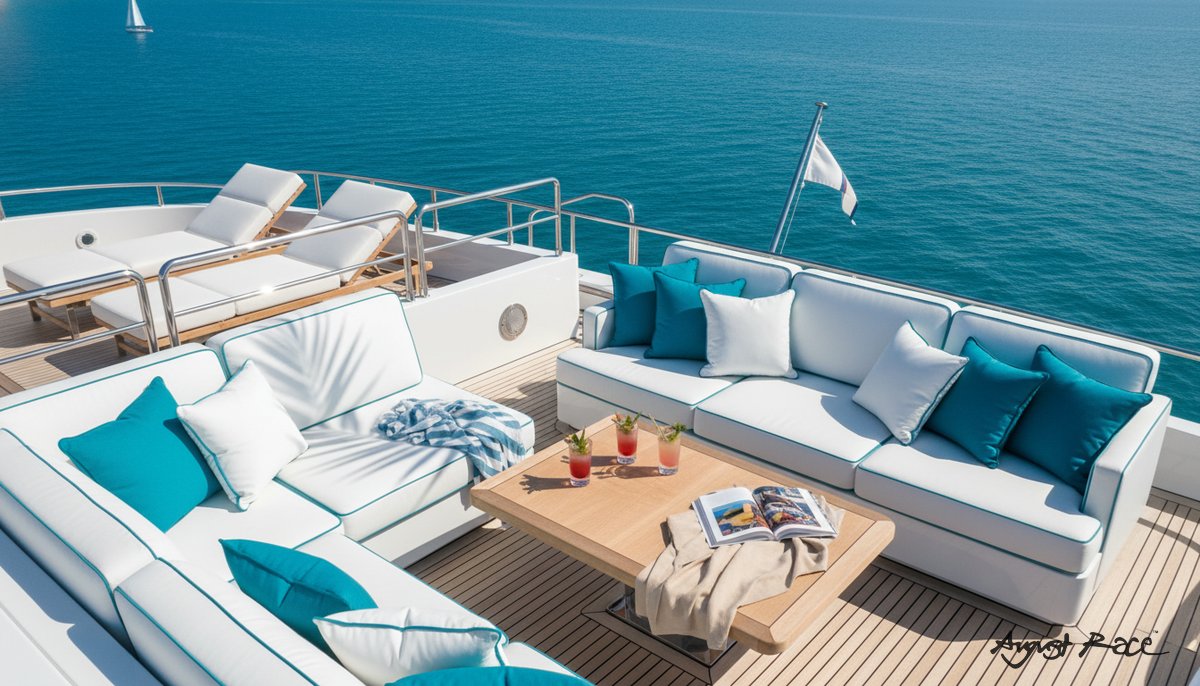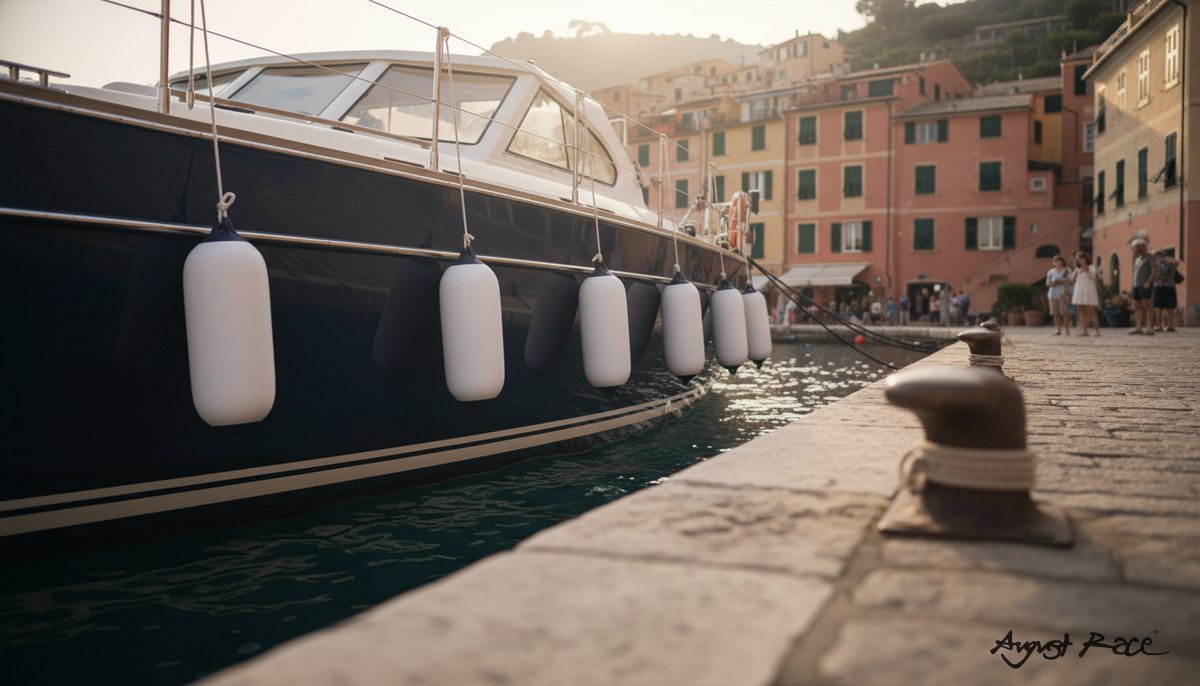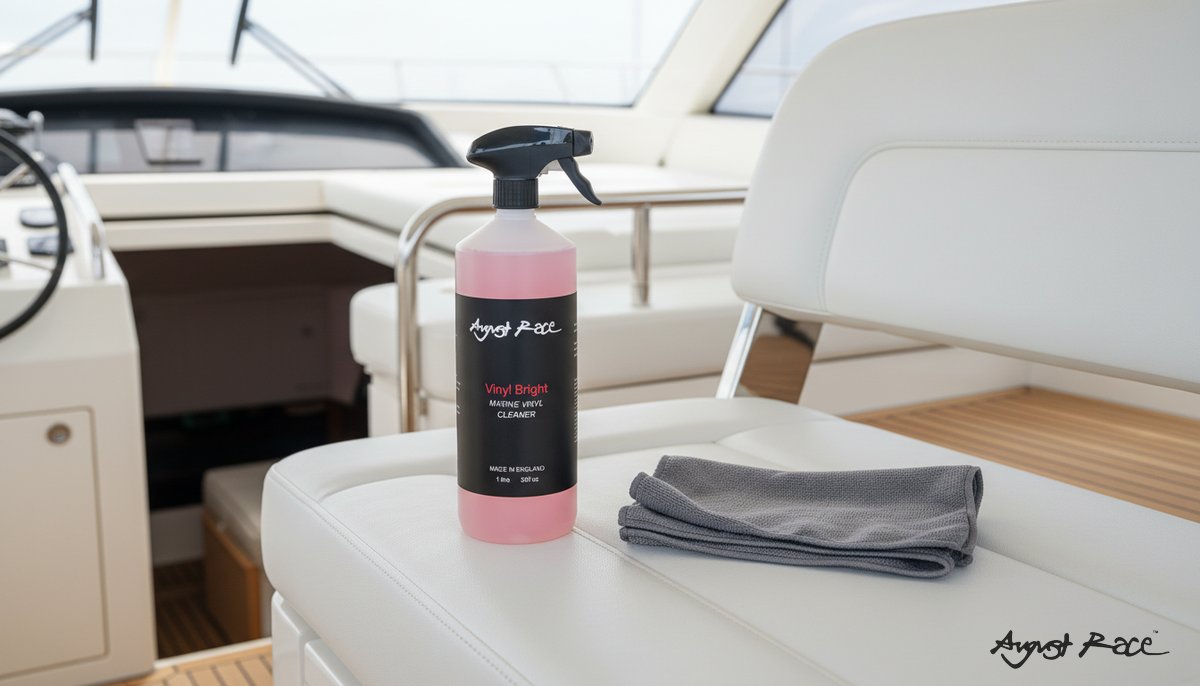How to Restore and Protect Boat Seats with Vinyl Bright: Vinyl Upholstery Cleaning & Marine Mold Removal
Keeping boat seats clean and protected requires more than a quick wipe-down. Effective vinyl upholstery cleaning and reliable marine mold removal both matter if you want seats to last and look bright.
This guide explains why marine vinyl needs specialized care, how the Vinyl Bright cleaner fits into a non-abrasive approach, and the exact steps to remove mildew, restore color, and support long-term mildew prevention.
Why marine vinyl needs specialized care
Boat seats face tough conditions: sun, salt, and humidity. UV exposure can fade and dry out vinyl, salt residue attracts moisture, and warm, damp air encourages mold and mildew. In this environment, stains can appear quickly and become difficult to remove if left untreated.
Mold and mildew often show up first at seams, under cushions, and in shaded or poorly ventilated areas. Household cleaners may be ineffective or too harsh, sometimes bleaching, dulling, or abrading the surface. This can weaken stitching, roughen textures, or leave residue that attracts more dirt.
Common concerns include:
- Preserving the factory finish and color
- Avoiding abrasives that scratch or dull vinyl
- Preventing recurring stains after cleaning
For these reasons, marine-specific, non-abrasive vinyl cleaners are preferred. They help lift grime and mildew stains while respecting marine materials. The goal is a method that both cleans and brightens without harsh scrubbing -- setting the stage for a product-led approach using the marine vinyl upholstery cleaner.
With risks and concerns clear, the following approach balances effective mold removal with gentle care.
How August Race Vinyl Bright works: formulation and safety basics
The Vinyl Bright cleaner is designed for vinyl brightening and to assist with lifting mildew stains on marine upholstery without abrasive action. Used correctly, it supports restoring vinyl upholstery appearances while helping protect stitching and surfaces from unnecessary wear due to harsh scrubbing.
Safety and compatibility basics:
- Check the product label for compatible vinyl types and any exclusions. Marine vinyl varies by boat and model.
- Avoid harsh solvents and abrasive pads that can damage stitching, seams, or underlying foam.
- Do not allow any cleaner to dry on the surface. Work in manageable sections and rinse thoroughly with fresh water.
Environmental and application cautions:
- Work in shade or cool conditions to prevent premature drying.
- Control runoff. Avoid cleaning directly over open water; use a wash bay or area where rinse water can be contained and disposed of responsibly.
- During drying, protect seats from direct, intense UV until fully dry to reduce streaking or rapid re-soiling.
Set expectations:
- Light to moderate mildew stains often respond in one or two passes.
- Deep-set discoloration, UV fade, ink/dye transfer, or material degradation may not fully reverse with DIY cleaning.
- If stitching is failing, foam is waterlogged, or vinyl is brittle/cracked, consult a professional.
Now, follow these steps to remove mold and restore vinyl.
Step-by-step: cleaning mold from marine vinyl safely
These steps outline cleaning mold from marine vinyl and practical mildew stain removal on boats. Always follow your product’s label.
-
Prepare the workspace
-
Move the boat into shade or work early/late in the day.
-
Ventilate the area and open compartments to reduce humidity.
-
Remove loose debris with a soft brush or vacuum.
-
Test for colorfastness in a hidden spot. Apply a small amount of cleaner per label, agitate lightly, and check for dye transfer or dulling after rinsing and drying.
-
Gather tools: non-abrasive soft-bristle brush, microfiber cloths, bucket of fresh water, and an applicator bottle if needed.
-
-
Apply the cleaner correctly
-
Use the Vinyl Bright cleaner as directed on its label -- concentrate or ready-to-use, depending on packaging.
-
Work in small areas. Apply enough product to wet the surface without drenching seams.
-
Allow brief dwell time as directed. Do not let the cleaner dry.
-
Agitate with a soft brush using light, overlapping strokes. Focus on seams, piping, and textured zones where mold anchors.
-
-
Rinse and inspect
-
Rinse thoroughly with fresh water to remove lifted residue.
-
Wipe with a clean microfiber, then inspect in natural light.
-
Repeat a short, targeted treatment for stubborn spots. If stains persist after multiple careful passes, the discoloration may be embedded or related to UV fade rather than active mold.
-
-
Drying and immediate aftercare
-
Blot excess water from seams and creases.
-
Air-dry in shade with good airflow. Leave cushions propped up to ventilate undersides.
-
Until fully dry, keep covers off and reduce moisture buildup with ventilation.
-
With mold addressed, move on to restoring overall appearance and brightening.
Techniques to restore vinyl upholstery and brighten faded seats
After cleaning, you can improve brightness with gentle methods that respect the vinyl surface.
Gentle brightening methods:
- Apply a light mist or thin film of the restore vinyl surfaces solution as directed.
- Use controlled, light agitation with a soft brush, then buff with a clean microfiber in straight, overlapping passes.
- For heavily faded or uneven areas, perform staged treatments: brief applications with inspection between passes rather than one aggressive session.
Handling stubborn mildew stains:
- Spot-treat small areas instead of re-wetting entire panels if only a few sections need attention.
- If multiple careful passes produce little change, consider that the stain may be UV-related yellowing or dye transfer rather than mildew.
- Know the DIY limit. Deep discoloration or vinyl hardening often requires professional evaluation.
Finishing steps to preserve the look:
- After the vinyl is fully dry, apply a compatible marine vinyl protectant with UV inhibitors, as recommended by the protectant’s label.
- Reapply protectants on a seasonal schedule, especially before peak sun months.
Materials to avoid:
- Bleach or strong oxidizers that can weaken vinyl and stitching
- Abrasive pads or powders that scratch and dull the surface
- Harsh solvents that can swell or damage foam and adhesives
If results aren’t as expected, review common mistakes and when to seek professional help.
Troubleshooting, common mistakes, and when to call a pro
Common mistakes to avoid:
- Scrubbing with abrasive pads or stiff brushes
- Using bleach or strong solvents on vinyl
- Skipping patch tests for colorfastness
- Letting cleaner dry on the surface
Interpreting persistent discoloration:
- Surface mold stains usually lighten with one or two careful passes.
- Yellowing, brittleness, or pattern-wide fading often indicates UV or material degradation rather than removable staining.
Corrective actions and mildew prevention:
- If residue remains, rinse more thoroughly and repeat short, light applications.
- Improve ventilation: prop cushions, open hatches, and use breathable covers.
- Add routine wipe-downs during humid months and schedule periodic deep cleans to prevent build-up.
When to call a pro:
- Torn or brittle vinyl, seam failure, foam rot, or severe and uneven fading
- Persistent discoloration after multiple cautious treatments
- Need for color restoration or reupholstery
For long-lasting results, adopt a simple seasonal schedule that reduces recurrence and keeps vinyl bright.
Seasonal maintenance schedule to prevent mildew and keep vinyl bright
Quarterly checklist:
- Rinse seats with fresh water after salty outings.
- Inspect seams, piping, and shaded areas for early signs of mildew.
- Perform light vinyl upholstery cleaning with a non-abrasive vinyl cleaner; do not let product dry.
- Reapply vinyl protectant with UV inhibitors if water no longer beads or seats look dry.
Humid-season weekly habits:
- Wipe down seats after use, focusing on shaded zones and beneath cushions.
- Keep covers breathable and seat bases ventilated.
- Dry out wet gear before stowing to reduce trapped moisture.
Annual tasks:
- Complete a full inspection for cracking, hardened areas, seam fatigue, and foam waterlogging.
- Deep clean before and after peak season using non-abrasive vinyl cleaners.
- Replace compromised covers and check drainage so water does not pool around seats.
Off-season storage:
- Store dry, with breathable covers. Avoid tight plastic wraps that trap humidity.
- Elevate cushions slightly to encourage airflow and prevent condensation.
These steps reduce the need for aggressive cleaning or early replacement by focusing on consistent mildew prevention and gentle care. This approach supports restoring vinyl upholstery without abrasion.
Next steps and where to get help
To move forward: test in a hidden area, follow the step-by-step cleaning procedure, and put the maintenance schedule into practice for reliable vinyl upholstery cleaning and effective cleaning mold from marine vinyl. Review all product documentation and label directions for the marine vinyl upholstery cleaner before use to confirm compatibility and application steps.
If mold persists or you see structural issues (brittle vinyl, seam failure, foam rot), contact a marine upholstery specialist. Look for providers experienced with non-abrasive restoration, who can share references and offer clear estimates or warranties.
Source cleaners and protectants from reputable marine suppliers. To purchase or learn more, visit the August Race shop.
FAQ: quick answers on cleaning mold, mildew stains, and restoring vinyl
What is the safest way to remove mildew stains from boat vinyl without damaging stitching?
Use a non-abrasive vinyl cleaner and a soft brush with light pressure. Work in shade, allow brief dwell time per label, agitate gently, and rinse thoroughly so residue does not sit in seams or stitching.
How do I test a non-abrasive vinyl cleaner for colorfastness on marine upholstery?
Choose a hidden spot, apply a small amount as directed, and agitate lightly. Rinse, dry, and check for any color change, dulling, or texture shift before treating visible areas.
Can mildew on vinyl upholstery be fully removed or will fading remain after cleaning?
Many surface mildew stains lift with one or two careful treatments, but UV-related yellowing or dye transfer may not fully reverse. If stains persist after multiple gentle passes, consider professional assessment or panel replacement.
What routine prevents recurring mold and mildew on boat seats during humid seasons?
Increase ventilation, wipe down seats after use, and keep covers breathable. Perform frequent light cleanings with non-abrasive vinyl cleaners and dry cushions thoroughly before storing.
For detailed, step-by-step instructions, revisit the cleaning and restoration sections above.
About the Author
August Race Team
The August Race professional team brings decades of marine industry expertise and product development knowledge.
Get Expert Tips
Subscribe for marine care insights and product updates from industry professionals.
No spam. Unsubscribe anytime.
You May Also Like

Boat Seat Mildew: Clean, Restore Vinyl, Prevent Mold
Clean mold from vinyl boat cushions safely, restore color with Vinyl Bright, and prevent stains during rainy season and humid storage.

August Race Fender Clean: Eliminate Fender Grime
Discover how August Race Fender Clean removes fender grime, salt and black streaks while staying non-toxic and eco-safe for busy coastal marinas.

Can faded fiberglass be restored? | August Race
Yes, faded GRP often responds to cleaning, compounding, polishing, and a UV sealer. Learn when to restore and how GRP Sealer UV protects.
